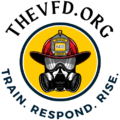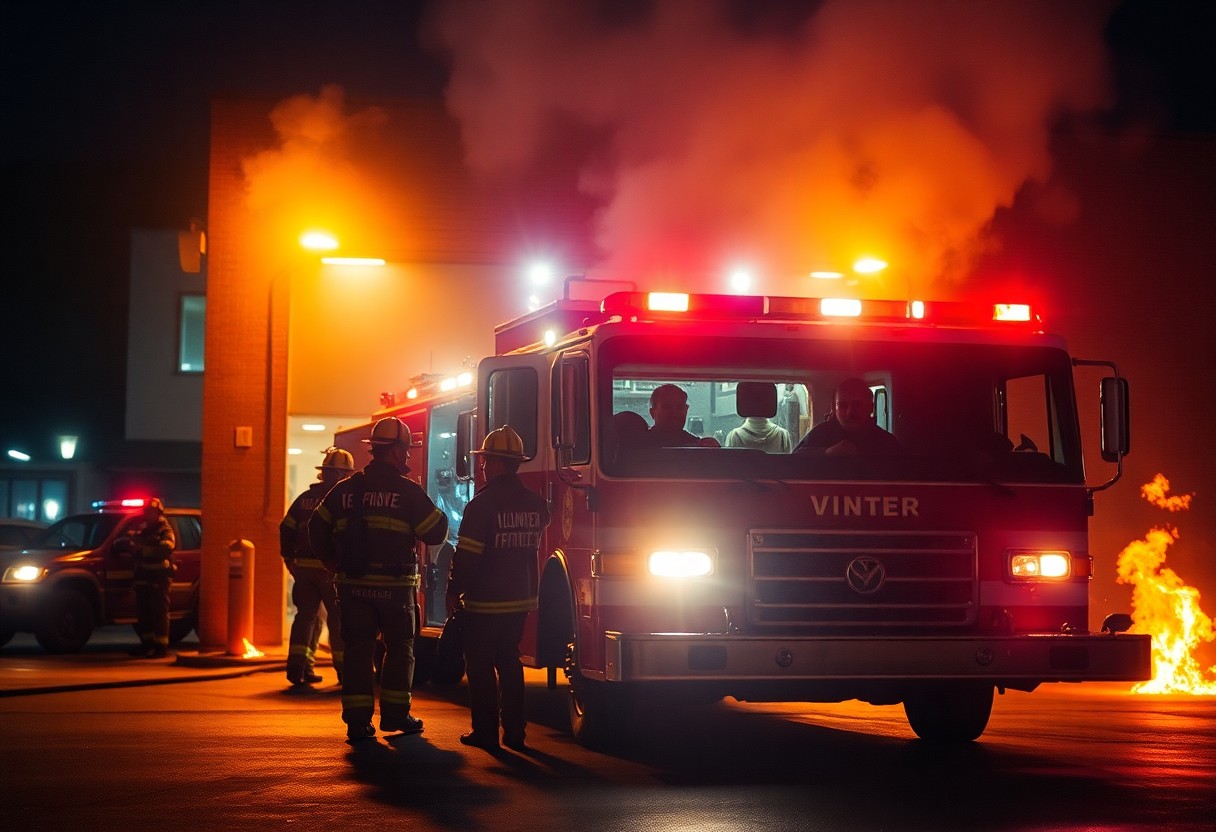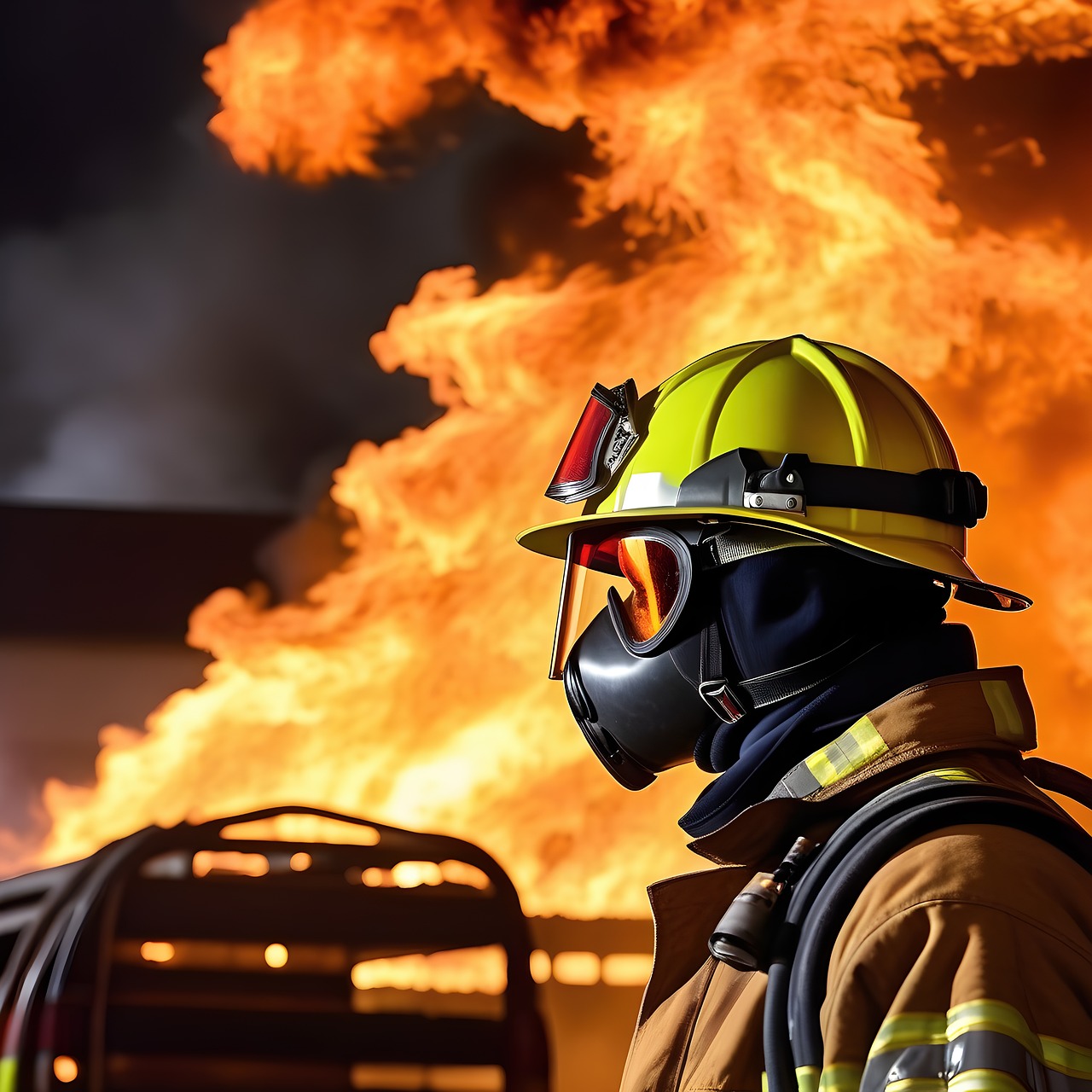Illumination at emergency scenes is imperative for ensuring the safety and effectiveness of your firefighting operations. As a volunteer fire department, you face unique challenges when it comes to lighting, and adopting best practices can make a significant difference. This blog post will guide you through effective strategies for scene illumination, helping you enhance visibility, improve coordination, and protect both your team and the community you serve.
Importance of Scene Illumination
Your ability to effectively illuminate the scene of an incident is paramount for both safety and efficiency. Proper scene illumination aids in swift identification of hazards and facilitates coordination among team members. Without adequate lighting, imperative details may be overlooked, potentially compromising the safety of your crew and slowing down critical operations. By prioritizing optimal scene illumination, you not only enhance the effectiveness of your response but also safeguard everyone involved in the operation.
Enhancing Visibility
At any emergency scene, enhancing visibility is key to keeping your team safe and efficient. Utilizing portable lighting systems allows you to illuminate dark areas, ensuring that all firefighters can see potential hazards and coordinate their efforts more effectively. Additionally, deploying lighting at strategic locations provides a clear line of sight for incoming support and emergency services, which is imperative for seamless operations.
Safety Considerations
For your team to operate effectively, addressing safety considerations involving scene illumination must be a priority. This means ensuring that your lighting equipment is both reliable and easy to set up, allowing your firefighters to focus on the task at hand rather than struggling with faulty gear. You must be aware of potential trip hazards created by cords and cables and mitigate these risks by creating well-lit, clear pathways.
With proper planning, you can minimize potential safety hazards associated with scene illumination. Make sure to conduct regular checks of your lighting equipment to ensure functionality before each response. Familiarize your team with how to set up lighting quickly and efficiently while being vigilant of shifting conditions on the ground. Adequate communication regarding the placement of lights, including notifying all team members when additional illumination is added, fosters a safer environment in which everyone can perform their duties effectively.
Types of Lighting Equipment
Some of the most effective lighting equipment for volunteer fire departments includes:
| Type of Lighting | Description |
| Portable Lighting | Flexible and easy to deploy, ideal for scene illumination. |
| Vehicle-Mounted Lighting | Brought to the scene via fire apparatus, providing powerful illumination. |
| Area Lighting | Covers large spaces, important for large-scale incidents. |
| Task Lighting | Directed to specific areas for detailed work. |
| Scene Lighting | Enhances visibility for safety and operational efficiency. |
Assume that incorporating a variety of lighting types enhances visibility and safety during operations.
Portable Lighting Solutions
Below are popular portable lighting options that volunteer fire departments can use effectively at incidents. These devices offer flexibility, allowing you to position lights according to the unique requirements of each scene. Battery-powered lanterns, LED floodlights, and collapsible light towers are some options to consider, ensuring adequate illumination wherever needed.
Vehicle-Mounted Lighting
Beside portable options, vehicle-mounted lighting is an important component of your lighting strategy. These lights are typically integrated into the firefighting apparatus and provide powerful illumination upon arrival at the scene. They are designed for durability and efficiency, with the ability to cover a large area quickly.
Lighting provided by vehicle-mounted systems is critical for setting the stage at emergency scenes. With options like light bars, floodlights, and scene lights, these systems are meant for easy activation and tailored deployment. By having multiple angles and intensities, they ensure your team can operate effectively while minimizing risk, enhancing safety for both responders and victims alike.
Techniques for Effective Illumination
Now that you understand the importance of scene illumination, implementing effective techniques can significantly enhance safety and operational efficiency during fire responses. Utilizing a combination of lighting methods and technologies will allow you to adapt to various situations, ensuring that your team can clearly assess risks and make informed decisions in the heat of the moment.
Scene Assessment and Planning
About effective illumination begins with a thorough scene assessment and planning. Before deploying lights, evaluate your incident’s surroundings, potential hazards, and any necessary tactical considerations. Taking the time to strategize will empower you to choose the right equipment and setup for optimal visibility and safety.
Strategic Lighting Placement
With an understanding of the scene, strategic lighting placement becomes paramount. Position your lights to minimize shadows and maximize visibility, directing beams towards areas that require immediate focus and attention. This thoughtful arrangement enhances situational awareness for both your team and bystanders, allowing for a more effective response.
Placement of lights should prioritize key areas such as entry points, hazard zones, and command posts. Consider using portable lights with flexible mounting options to ensure they can be adapted as the scene evolves. Aim for a mixture of overhead and ground lighting to reduce glare and dark spots, allowing your personnel to navigate safely while remaining aware of their environment.
Utilizing Natural Light
Many volunteer fire departments can benefit significantly from harnessing natural light during emergency scenes. By strategically positioning your team during daylight hours, you can enhance visibility and improve the effectiveness of your operations. Natural light not only provides illumination but also reduces the reliance on artificial lighting, allowing for more efficient resource management in urgent situations.
Time of Day Considerations
Natural light varies throughout the day, impacting your scenes differently at dawn, midday, and dusk. Understanding these variations can help you identify optimal times for operations. Midday light tends to be the most intense, providing excellent visibility, while low-angle light during dawn or dusk can cast long shadows and create challenging contrasts that require careful navigation.
Weather Impacts
Between clear skies and cloudy conditions, the effectiveness of natural light can fluctuate dramatically. Overcast days may dilute sunlight, resulting in dull atmospheres that hamper visibility. Additionally, rain, fog, or snow can further obscure surroundings, necessitating an adjustment in your approach to lighting and scene assessment.
In fact, adverse weather can dramatically alter your operational decisions. Heavy rain or fog can create challenges that impact visibility and the effectiveness of natural light. It’s vital to continuously assess weather conditions and adjust your strategies accordingly. Having alternative lighting solutions ready, such as portable lights, can help ensure safety and efficiency, even when natural light isn’t on your side.
Training and Standard Operating Procedures
Not establishing effective training and standard operating procedures for scene illumination can lead to significant challenges during emergency responses. Your firefighters need to understand not only the equipment but also the techniques that ensure a safe and effective lighting setup. Implementing a structured training program will help enhance their skills and confidence, allowing them to focus on their primary mission: saving lives and property.
Training Firefighters on Lighting
Before you proceed with lighting the scene, it is vital to ensure that all firefighters are thoroughly trained on the types of lighting equipment available and their proper application. Conducting regular training sessions will familiarize your team with various lighting scenarios and reinforce safety measures. This hands-on experience will enable them to act swiftly and effectively when faced with real emergency situations.
Developing SOPs for Scene Illumination
Behind every successful fire response is a comprehensive set of standard operating procedures (SOPs) tailored to your department’s needs regarding scene illumination. These SOPs should encompass guidelines on equipment selection, placement, and operation, as well as protocols for safety and communication among team members. Establishing clear procedures ensures uniformity in your approach, empowering each firefighter to perform their role effectively in high-pressure situations.
At the heart of developing SOPs for scene illumination is the understanding that consistency leads to safety and efficiency. You should involve your team when drafting these procedures to promote buy-in and a deeper understanding of the protocols. Consider incorporating scenarios that reflect the varied environments in which you might operate, ensuring your SOPs cover everything from urban settings to rural incidents. Additionally, regularly reviewing and updating your SOPs based on feedback and evolving technology will keep your practices relevant and effective, ultimately enhancing the safety and success of your responses.
Maintenance and Upkeep of Lighting Equipment
To ensure optimal performance and longevity of your lighting equipment, regular maintenance and upkeep are imperative. Implementing a consistent maintenance schedule not only enhances the effectiveness of your scene illumination but also ensures safety during emergency responses. Routine cleaning, inspections, and timely repairs will help your equipment be ready when it’s most needed.
Regular Inspection Protocols
With regular inspection protocols in place, you can efficiently identify any issues with your lighting systems before they escalate. Check your equipment for signs of wear, damage, or malfunction regularly, and keep a log of these inspections to track any recurring problems. This proactive approach will help maintain trust in your equipment’s reliability during critical situations.
Repair and Replacement Strategies
Around your fire department, establishing clear repair and replacement strategies for lighting equipment will save time and resources. Following inspections, address any issues promptly, determining whether repairs are feasible or if a full replacement is necessary. Consider creating a priority list for equipment based on usage frequency and critical operational needs.
Regular assessment of your lighting gear will help you create informed decisions regarding repairs and replacements. To optimize your strategies, analyze the lifespan and performance of each piece of equipment, and allocate budget resources accordingly. Additionally, stay up-to-date with advancements in lighting technology, which may provide more efficient options that can ultimately enhance your department’s emergency response capabilities. By prioritizing equipment maintenance, you uphold safety and operational excellence within your team.
Conclusion
Conclusively, implementing best practices for scene illumination in volunteer fire departments significantly enhances your operational effectiveness and safety. By effectively utilizing portable lighting, ensuring adequate coverage, and considering the safety of both your team and the public, you elevate your response capabilities. Regular training on lighting procedures and technology integration further aids in preparedness. You play a vital role in creating a well-lit environment that supports efficient operations and minimizes risks during emergency responses.


